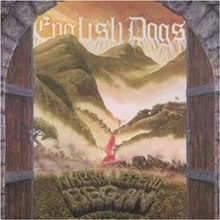
One thing I find interesting about the alignment systems of early D&D is the choice to use a law/chaos cosmology as opposed to one based on the more familiar construct of good/evil. This choice may have been a nod to Michael Moorcock's various novels built around the eternal cosmic struggle of law against chaos, but it also corresponds nicely with the ancient mythologies of many (or even most) cultures where the law/chaos cosmology appears to predate the traditional concept of good/evil. Many mythological heroes behave in ways that could be perceived as evil by modern standards. Yet these ancient characters maintain their heroic status, not by championing good over evil, but by defending order from disorder. In it's most primitive form this concept might even be reduced to a basic struggle of light versus darkness (i.e. the light and safety of the tribal fire versus the darkness and peril of the unknown that lie beyond).
The significance of this, it seems, is that if correctly understood and executed, this sort of treatment of the early D&D alignments might be useful to a fantasy campaign striving for a more primitive, heroic feel. I've title this post "Part I" to allow me to come back to this idea as I continue to wrap my head around it.






No comments:
Post a Comment